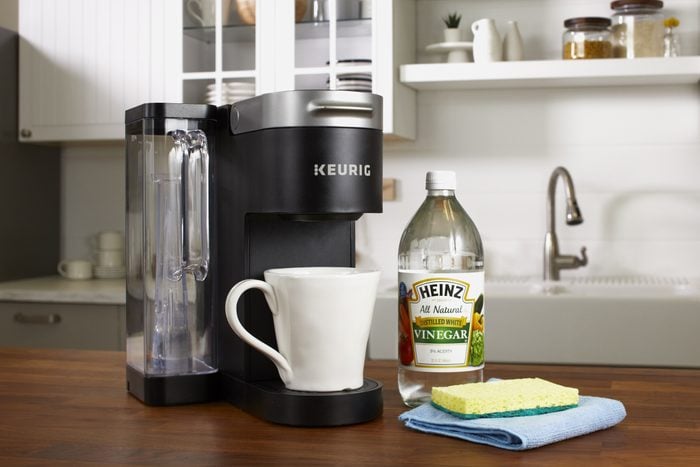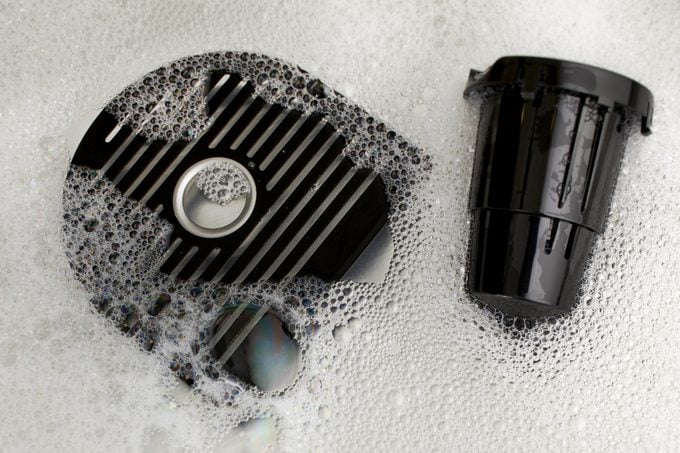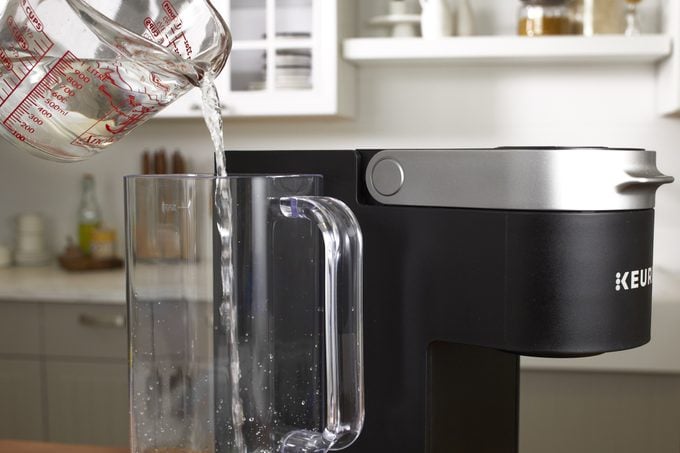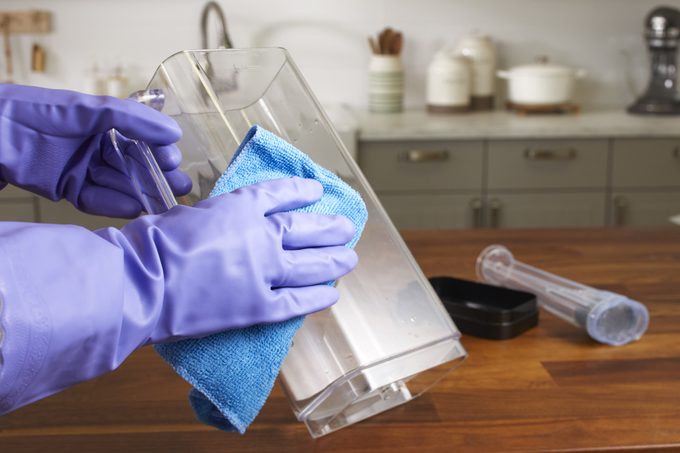How to Clean a Keurig Coffee Maker
Updated: Feb. 28, 2022

Get the most out of your single-serve coffee maker—and the best-tasting coffee—by learning how to clean a Keurig the right way.
It’s entirely possible you’re so happy with your trusty Keurig coffee maker that you simply assume all that needs to be done is to drop a pod in and drink up. But just like you need to regularly clean your coffee maker, you also need to clean your Keurig. If you’ve noticed that your coffee has started tasting stale or funny, your coffee maker probably needs a good cleaning.
Your Keurig requires regular cleaning and descaling to remove any gross-looking gunk that makes your coffee taste bad, plus it’s unhealthy to boot. “It’s important to treat your Keurig equally as well as your small kitchen appliances that are used to prepare food,” says Kevin Hartley, CEO of Cambio Roasters®, a company that makes biodegradable, organic, and fair trade K-Cups.
In case you’ve ever wondered how to clean a Keurig, you’re in luck since it’s not that complicated a process to keep it looking sparkly inside and out. And believe it or not, there are some easy tricks for cleaning a Keurig with vinegar. Hartley offered tips for cleaning your Keurig weekly and also for a three- to six-month cleaning, which should be on your household cleaning schedule. We also asked our expert to break down the steps to descale a Keurig.
Or if you’re inspired to clean pretty much everything in the kitchen, start with refrigerator cleaning or figure out how to clean stainless steel.
What you need to clean your Keurig
For the every week service, you will need:
- Warm soapy water
- A clean wet sponge
- A clean hand towel
For the three- to six-month cleaning, or to clean a Keurig with vinegar, you will need:
- Either white vinegar or Keurig’s descaling solution
- Water
- A coffee mug
How to clean your Keurig
Weekly Keurig cleaning:

- Clean the mug tray and the K-Cup holder in warm soapy water.
- For the reservoir, wipe the surfaces with a damp, soapy cloth; rinse; and let it air dry (to avoid lint in the reservoir).
- Reassemble your brewer.
Three- to six-month Keurig cleaning:

Hartley explains that the three- to six-month process is called descaling, “which means removing any hard water minerals in the brewer’s internal system. Hard water minerals are not harmful but can affect how well the brewer performs.” If you do not have hard water, Hartley says “Keurig brewers can be used on a regular basis for years without any issues.”
The process is as follows:
- Place either 16 ounces of white vinegar or Keurig Descaler solution with 16 ounces of water in the reservoir. Make sure there is no K-Cup in the brew chamber.
- Using a mug, continue to brew until the reservoir is empty. (Note: You will need to empty the mug before this process is complete.)
- Let the vinegar sit in the brewer for 30 minutes to break down any minerals and ensure a successful descaling process.
- Fill the reservoir and brew 12 cups of hot water (with no K-Cup and mug in place) to remove all traces of vinegar or descaling solution and minerals. Your Keurig is now ready to enjoy!
How often to clean your Keurig
- Every week: Clean the mug tray, K-Cup holder, and reservoir.
- Every three to six months: Descale and clean your Keurig with vinegar.
If you’re looking to expand your morning java repertoire, we pulled together a list of the best cold brew coffee makers along with recommendations for different types of coffee.
How to keep your Keurig clean

In addition to regular cleanings, Hartley recommends wiping down your Keurig after each use to reduce the chance of any build-up and following these tips:
- Don’t leave water in the reservoir for too long. It’s always a good idea to freshen the reservoir water every couple of days. “If you’re going out of town, empty the reservoir and unplug the brewer, to be safe,” Hartley says.
- Clean grounds out of the K-Cup holder. Don’t let too many coffee grounds build up in the K-Cup holder. If this occurs, pop the K-Cup holder out and give it a quick rinse.
- After making a sugary drink, rinse it out. After making hot chocolate or another sugary drink, “perform a cleansing brew without a K-Cup in the holder to prep the brewer for the next cup of coffee,” Hartley says.
Source:
- Kevin Hartley, CEO of Cambio Roasters, a company that makes biodegradable, organic, and fair trade K-Cups
